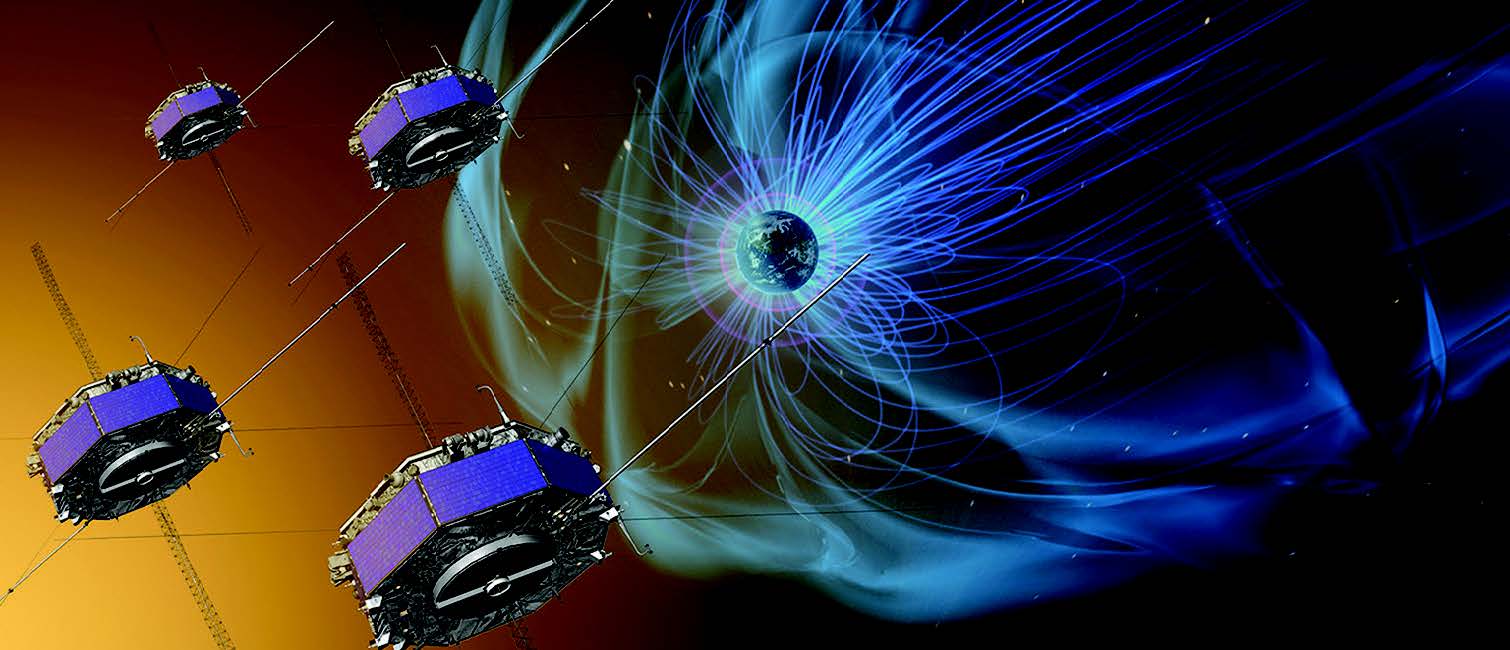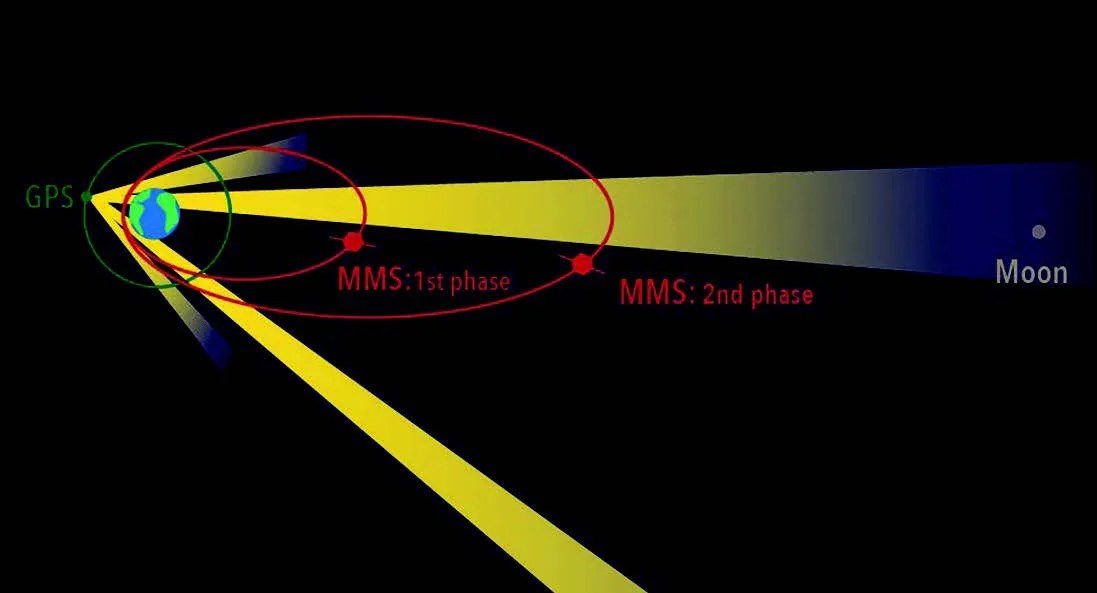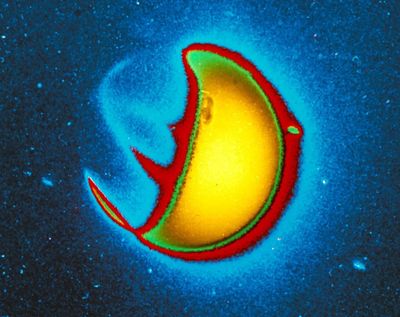Technology Infused: In March 2015, NASA launched an exciting new mission to investigate how the sun’s and Earth’s magnetic fields connect and disconnect, explosively transferring energy from one field to the other. This process—called magnetic reconnection—influences celestial bodies throughout the solar system, including our home planet. The Magnetospheric Multiscale (MMS) mission is one of NASA’s most complex missions, involving the integration of over 100 instruments into four spacecraft flying in formation. Magnetic reconnection occurs in the thin, fast moving, and largely unpredictable electron diffusion regions (EDR) of Earth’s magnetosphere.

To measure the processes occurring in the EDR, the four MMS spacecraft must capture data at a rate 100 times faster than previous missions, all while flying in tight formation. Development of MMS required NASA to overcome several engineering challenges using new technologies that, in some cases, took over a decade to mature.
MMS will fly through magnetic regions near Earth, speeding through them in under a second, so the onboard sensors must gather measurements amazingly fast compared to the prior state of the art. One of the speediest instruments developed for MMS is the Fast Plasma Investigation (FPI), which was based on technology developed through earlier SMD investments. FPI will gather a full sky map of data some 30 times per second—100 times faster than any previous similar instrument. FPI measures the charged particles, or plasma, present in magnetic reconnection sites. The FPI experiment includes four detectors on each MMS spacecraft to measure electrons and four to measure ions. Each detector is, in turn, made of two sensors that can scan through a 45-degree arc for a larger panorama. Each pair of ion sensors can produce a three-dimensional picture of the ion plasma every 150 milliseconds; each pair of electron sensors do the same for the electrons every 30 milliseconds. While transporting this much data is easy on Earth using high-speed Internet, it is difficult in space, where the data rate would quickly overwhelm the mission’s S-band allocation for downlinking data. To solve this problem, the MMS mission made use of new data compression techniques originally developed by NASA’s Space Communication and Navigation Program. The MMS team successfully infused this data compression technology into the mission, increasing its TRL to a flightready level through a rigorous test program, and then incorporating it into the FPI instrument.
Impact: Magnetic reconnection is responsible for the space weather that can adversely affect modern technological systems on Earth, such as telecommunications networks, GPS navigation, and electrical power grids. The FPI and data compression system provide essential capabilities that are enabling MMS to achieve its mission goal of measuring the plasma and the electric and magnetic fields inside the diffusion regions of Earth’s magnetosphere. Armed with these data, scientists hope to be able to understand the magnetic reconnection process and perhaps predict its effects in space and on Earth.
Status and Future Plans: After a successful launch on March 12, 2015, MMS traveled through space to reach a region on the sun-side of Earth, where it is executing the first phase of the mission. During this first phase, the FPI system has worked as planned and the data indicates an even higher number of reconnection region detections than previously hoped. In fall 2016, NASA plans to move MMS to Earth’s night-side to complete the second phase of its mission in an orbit that extends almost 99,000 miles away from Earth, nearly halfway to the moon.
Sponsoring Organization: The Heliophysics Division provided funding to Goddard Space Flight Center to conduct the technology development required to improve the sensitivity and data rate of heritage instruments, enabling development of the FPI.


































